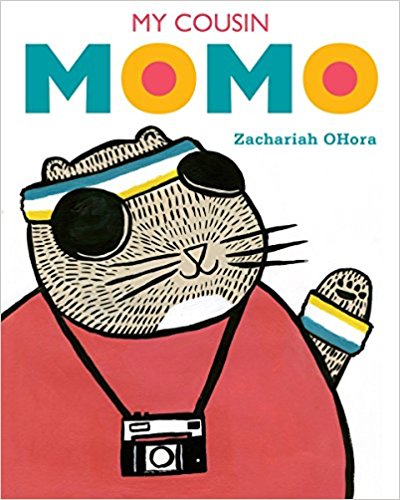Pennsylvania One Book, Every Young Child Early Literacy Program
Pennsylvania’s One Book, Every Young Child 2018 selection is My Cousin Momo. Written and illustrated by Zachariah OHora, the book was published in 2015 by Dial Books and is for children ages 3 to 5.

“Picture books with hip, quirky illustrations that are not just funny but also have plenty of heart are hard to find. The stylish My Cousin Momo by Zachariah OHora has it all.” ~ The Boston Globe
Overview
“Momo is coming for a visit, and his cousins are SO excited! But, when Momo appears, the squirrel cousins find that he has interesting dress up clothes, plays games differently and doesn’t want to fly even though he is a flying squirrel. But when they give Momo’s ideas a try, brother and sister squirrel end up making a new friend. When can they all visit together again?.”
Now in its 13th year, One Book, Every Young Child is a valuable program that highlights the importance of early literacy development in preschoolers and the significance of reading early and often to children, as well as engaging them in conversation and other activities around books.
The program has remained successful in part due to the partnership of collaborating agencies that all support early childhood literacy efforts. They worked together to develop this multifaceted program which is accessible to all areas and populations of the state.
Throughout the year, there will be local events including author visits; library and museum programming for families; and activities for parents, early child care providers and educators. There also will be traveling trunks developed by early childhood educators to help expand upon the concepts in My Cousin Momo. Each trunk is filled with fun book-related activities, games and manipulatives for young children that align with Pennsylvania’s Learning Standards for Early Childhood.
One Book, Every Young Child is made possible through a collaboration of the Pennsylvania Department of Education, Pennsylvania Department of Human Services, Pennsylvania Department of Conservation and Natural Resources, The Carnegie Science Center, Pennsylvania Library Association, Pennsylvania Center for the Book, Pennsylvania’s Promise for Children, Pennsylvania Association for the Education of Young Children and The Pennsylvania Child Care Association. This project is made possible by a grant from the Institute of Museum and Library Services as administered by the Pennsylvania Department of Education through the Office of Commonwealth Libraries.
Early Literacy is Important!
Pennsylvania One Book, Every Young Child is an established program that highlights the importance of early literacy development in preschoolers and the significance of reading early and often to children.
Facts about the importance of language and reading
- Ninety percent of a child’s brain growth occurs during birth and 4 years of age, so it is suggested that parents begin reading to their child at birth.
- When we read picture books to children, researchers have found that 95 percent of their attention is on the pictures. By occasionally pointing to the words in the book, you are helping them realize that it is the text we are reading, not the pictures.
- Research has shown that children who play with sounds of words in the preschool years are better prepared to read when they get to school.
- The language used in story books is different from what we use when we are speaking. Stories also have a certain structure with a beginning, middle and an end.
- Reading aloud introduces the patterns of language and develops vocabulary.
- Reading to a child just 20 minutes each day will enable him or her to hear 1 million words in a year and will expand his or her vocabulary by 1,000 words.
- Acting out stories or parts of them, having young children use their whole bodies, helps them internalize and understand what is happening in the story.
- Reading aloud helps a child develop a longer attention span and encourages the art of listening.
- Sharing stories introduces and keeps alive the cultural heritage of our own traditional tales and those of other cultures.
- Rhyming is one way that children learn to hear that words are made up of smaller parts.
- Writing can be very motivating. It helps children make the connection between the spoken and the written word. Writing begins with scribbles and develops into the ability to write letters.
- By using specific names for things, like cat and kitten, not only helps children learn new words, it also helps them understand differences between similar things.






